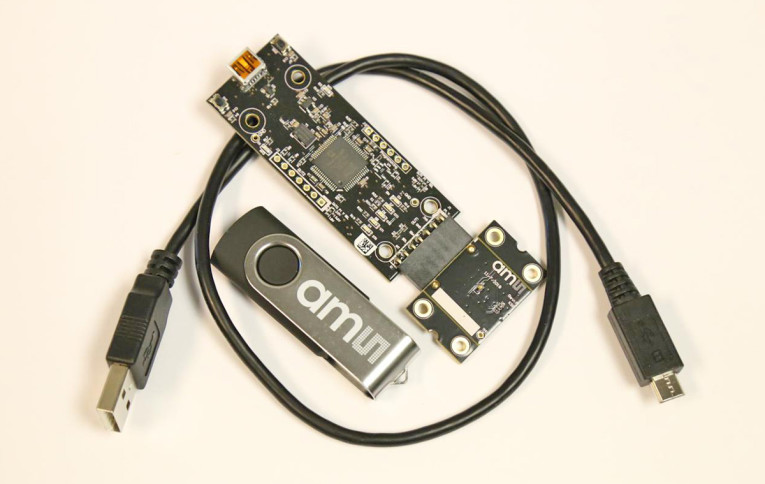
The proximity engine features advanced crosstalk noise cancellation through a wide range offset adjustments to compensate for unwanted IR energy reflection at the sensor. Proximity results are further improved by automatic ambient light subtraction. The sensor has an average active-mode current consumption of 70µA and 0.7µA in sleep mode. Central are the TMD2636 power-savings benefits, especially in the small battery capacity and size of a wireless earbud product. The TMD2636 digital I2C interface provides a patented solution for two devices to reside on the same bus, simplifying the system design for dual devices.
"Use of the TMD2636 proximity sensor for in-ear detection gives TWS earbud manufacturers new flexibility in product design, providing options to optimize their product’s performance, to reduce its size, or to extend the range of features which it supports – and so differentiate their products in a highly competitive market. The launch by AMS of the world’s smallest proximity sensor gives manufacturers new ways to extend battery run-time, optimize designs, and to deliver a more differentiated and higher value product to the consumer," says Darrell Benke, Strategic Program Director for Optical Sensors at AMS.

Reliable proximity detection performed by one or more TMD2636 sensors enables the earbud to automatically power up when inserted in the ear and power down when removed. This maximizes power savings when the earbud is not in use while providing the best user experience.
The development of the TMD2636 benefited from numerous AMS innovations in photodetector technology, optical package design, and factory test and calibration. Innovations in package miniaturization provide earbud manufacturers new scope to rethink earbud design and to offer an improved user experience. The overall volume of the TMD2636 is 30% smaller than that of earlier products: this offers product designers new freedom to incorporate multiple sensors or to integrate new functionality using components which could not be previously be accommodated. For instance, with multiple TMD2636 sensors, earbud in-ear detection and power management can be made more intelligent, providing higher reliability and consumer satisfaction.
"Market analysis (Canalys forecasts, October 2020) suggests the wireless earbud market will grow by 39% in 2021 to more than 350 million units. Manufacturers want the ability to compete in this rapidly growing market. Key to this will be user satisfaction such as design, convenience, battery life, high-quality listening experience and comfort," adds Pierre Laboisse, Executive Vice President Global Sales and Marketing, AMS.
The launch of the TMD2636 follows other recent new product introductions from AMS which also contribute to earbud manufacturers' efforts to create highly differentiated products. Pioneering technologies developed by AMS include Automatic Leakage Compensation, a form of digital Active Noise Cancellation which increases ambient noise attenuation in loose-fit earbuds to greater than 40dB. AMS has also developed innovative Digital Augmented Hearing features based on its AS3460 ANC chip, giving earbud users the freedom to enjoy configurable noise cancellation, so that they can choose which categories of sound they hear, and which are blocked by the noise cancellation system.
The TMD2636 proximity sensor is now available for sampling.
www.ams.com/TDM2636








